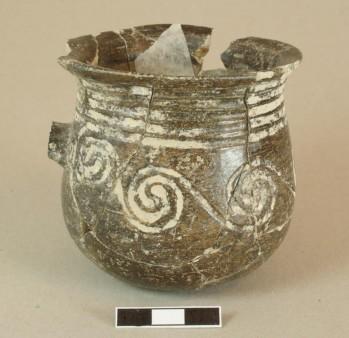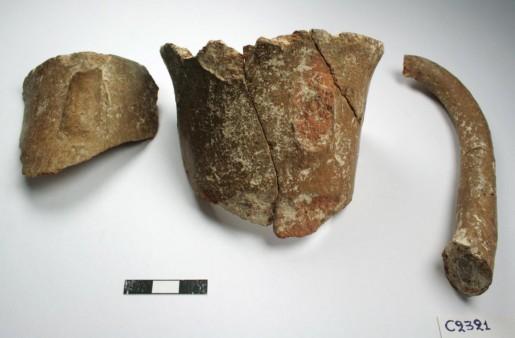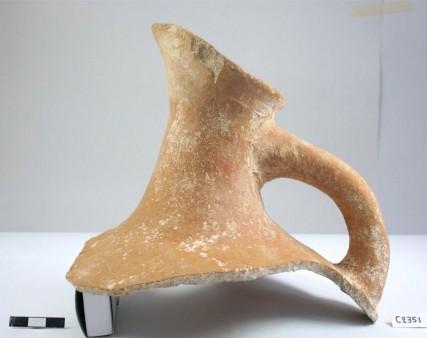Dr Peggy Sotirakopoulou / Cyclades Seminar series
Source - http://www.archaeology.wiki/blog/2015/04/21/kastri-group-evidence-dhaskalio-keros/

Fig. 1. One-handled cup with grooved decoration from Dhaskalio Phase C
The pioneering archaeological investigations of Christos Doumas at Dhaskalio, Keros in September 1963, followed by the 2006-2008 extensive surface survey and excavations of the University of Cambridge on the islet brought to light the remains of an important Early Cycladic settlement. The undisturbed stratigraphy of the site owing to the absence of later phases of occupation allows for safe inferences about its character and its chronology with wider implications for the late Early Bronze Age of the Cyclades.

Fig. 2. Depas amphikypellon from Dhaskalio Phase C.
As explained in the abstract of Dr. Sotirakopoulou’s presentation “Study of the Dhaskalio pottery on the basis of the stratigraphic sequence allowed for the distinction of three successive phases of occupation of the settlement spanning the Early Cycladic II and Early Cycladic III periods: Phase A corresponds to earlier Early Cycladic II, Phase B corresponds to late Early Cycladic II and an early phase of the Kastri group, while Phase C (figs. 1-4) is shown to be the later and main phase of the Kastri group corresponding to both the early and late phase of Early Cycladic III as evidenced elsewhere in the Cyclades.

Fig. 3. Beaked jug with a backward tilting neck from Dhaskalio Phase C.
“These chronological conclusions taken into account with the ceramic continuity between all three phases of Dhaskalio suggest unbroken occupation of the settlement from the moment of its foundation in earlier Early Cycladic II through to its abandonment at the end of the Early Bronze Age, thus countering the view that the Kastri group represents a time of dramatic change in the Cyclades and disruption of the Cycladic culture, and invalidating both the theory of a ‘gap’ in the Cycladic culture sequence during Early Cycladic III and the transposition of the Phylakopi phases I-ii and I-iii to Middle Cycladic I. Comparisons between Dhaskalio and other Cycladic settlement sites that have produced Kastri group pottery reveal both similarities with and differences from what appears to be the case at Dhaskalio, but it is not necessary that all the contemporary Early Cycladic settlements should have had the same history and the same fate.”

Fig. 4. Light-faced concave-necked jar with vertical ribbed decoration from Dhaskalio Phase C.